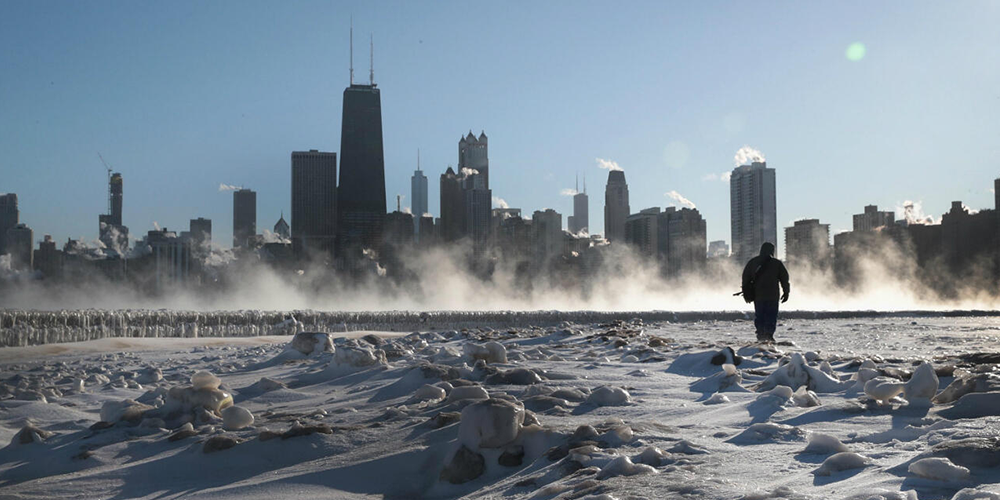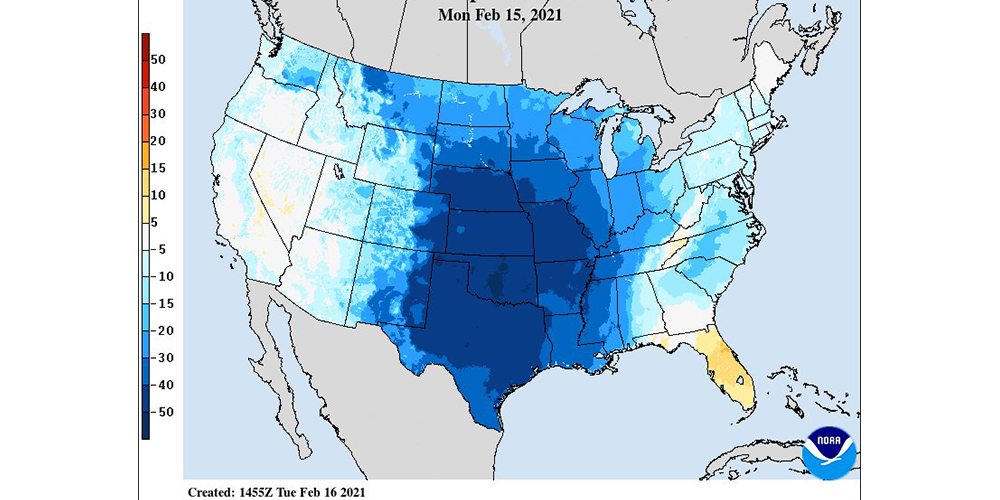
Why are there frequent cold waves in the context of global warming?
Research has shown that global warming promotes the southward movement of cold air.
The development and outbreak of cold waves are closely related to the westerly belt. The westerly belt is like a rubber band, whose elasticity is determined by the temperature gradient in the north-south latitude. If there is a significant temperature difference between the north and south, then the westerlies are strong; On the contrary, the westerlies are weak and prone to fluctuations.
In the past 100 years, the overall global temperature has continued to rise. In recent decades, the Arctic region has been experiencing faster warming than other parts of the world, known as the Arctic Amplification effect. This temperature change trend causes a decrease in the north-south temperature gradient, thereby weakening the circulation of the westerlies.
In this case, the blocking high pressure formed in the southern part of the westerlies is more likely to penetrate the Arctic region. At the same time, in the context of climate warming, the duration of blocking high pressure is becoming longer and longer, and sustained blocking high pressure is more likely to occur in mid to high latitudes of the Northern Hemisphere, especially in the Ural Mountains region.
Under climate warming, the occurrence of extreme cold wave events is often the result of the synergistic effect of multiple atmospheric systems. When the warm ridge develops northward, the warm air will cause a continuous decrease in sea ice in the Arctic Ocean region, thereby warming the Arctic region. At the same time, the La Ni ñ phenomenon occurred again that year, which refers to a decrease in sea surface temperature in the central-eastern region of the equatorial Pacific. This synergistic effect further promotes the weakening of the north-south latitude temperature gradient, leading to the weakening of the westerly belt and facilitating the occurrence of extreme cold wave events.

What are the hazards brought by cold waves?
Cold wave is a weather phenomenon that usually occurs during the cold season, especially in winter. It is usually accompanied by strong cold air masses, bringing a series of hazards, including but not limited to:
1. Low temperature and severe cold: The most obvious harm brought by cold waves is extremely low temperatures. Severe cold weather may lead to low body temperature, increasing the risk of frostbite and hypothermia. For certain populations, such as the elderly, infants and young children, and those with cardiovascular or respiratory diseases, severe cold weather may be dangerous.
2. Ice and snow weather: Cold waves bring precipitation such as snowfall or ice rain. Heavy snow and frozen road surfaces may cause traffic congestion, road icing, increased accidents, and inconvenience and danger to people's travel and daily life.
3. Freezing damage: Cold waves cause freezing damage to crops, water resources, and vegetation. Extremely low temperatures may cause crop freezing, damage to fruit trees, freezing of water sources, and impact agricultural production and the ecological environment.
4. Increased heating pressure: During cold-wave weather, people's demand for heating systems increases, which may lead to overloaded operation of heating facilities, increased energy consumption pressure, and even heating facility failures or shutdowns, causing heating difficulties and winter heating safety hazards.
5. Animal and plant survival challenges: Cold waves threaten wildlife and domestic pets. Low temperatures may make it difficult for wild animals to forage and find suitable habitats, which can endanger their survival. Home pets need warmth and safety in severe cold weather.
6. Water resource management: Cold waves may cause water bodies such as rivers, lakes, and reservoirs to freeze, affecting the flow and management of water resources. Frozen water bodies may affect the hydrological environment and impact aquatic organisms and water resource utilization.

How to deal with cold waves?
To cope with the harm caused by cold waves, the following measures can be taken:
1. Warmth measures: Wear sufficient warm clothing, including down jackets, hats, gloves, scarves, etc., to minimize exposure to cold air.
2. Strengthen heating: Check the operation status of heating equipment to ensure normal heating, clean up snow and ice around the heating equipment promptly, and maintain good ventilation.
3. Traffic safety: Check the weather and road conditions before traveling, avoid driving in adverse weather conditions, and if necessary, bring emergency supplies and vehicle rescue tools.
4. Anti-freezing measures: Insulate indoor and outdoor water pipes, install anti-freezing equipment, regularly check the condition of water pipes, and prevent water pipes from freezing and cracking.
5. Health protection: reduce outdoor activity time, avoid prolonged exposure to cold environments, pay attention to keeping warm and preventing cold, and seek medical treatment on time.
6. Emergency preparedness: Reserve sufficient food, water, and emergency supplies, and prepare emergency contact information and tools and equipment to respond to emergencies.
By taking these measures, we can effectively cope with the harm caused by cold waves, ensuring the safety and health of people's lives and property.
Post time: Feb-27-2024

